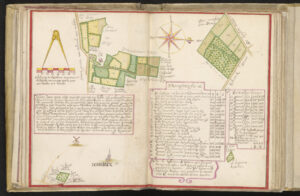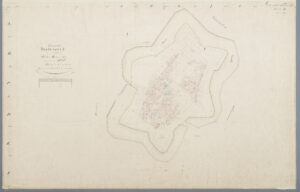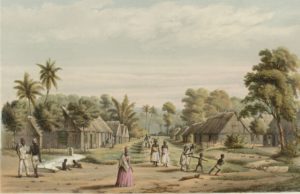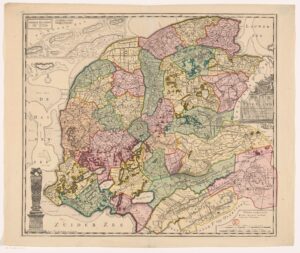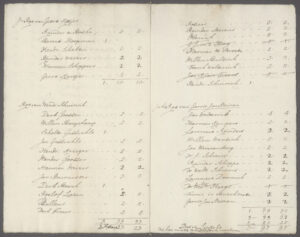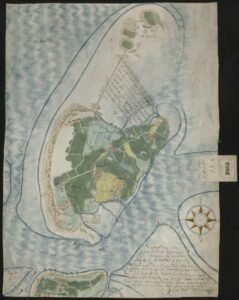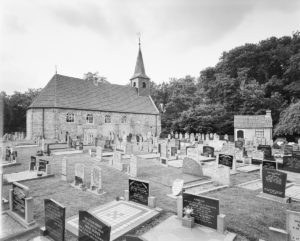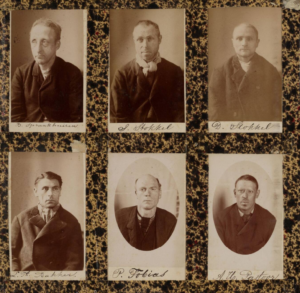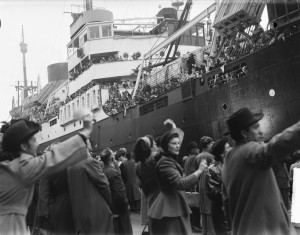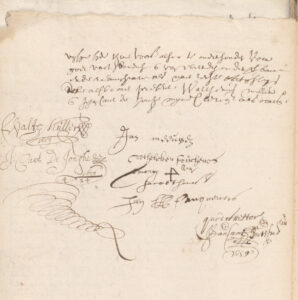Belending means abutting or adjoining. You may come across the term in notarial or court records involving properties. The belendende percelen are the abutting properties, that share a property boundary with the property that is being discussed. Many Dutch land records before the introduction of the Cadaster in 1832 identify the location of properties in terms of its neighbors, sometimes with cardinal directions, but often just in terms of "in between the houses of so-and-so." Sometimes, the … [Read more...]
Map of the Week: Minute Map of Bredevoort, 1832
When the cadastral administration was introduced in 1832, maps were made of the entire country. Each municipality was divided into sections. All the plots in a section were mapped in one or more sheets. The map we see today is for Bredevoort, a fortified town in Gelderland. You can find the minute maps for the whole country at the Cultural Heritage Service website or you can read more about cadastral overview maps and minute maps. … [Read more...]
Dutch Genealogy News for March 2024
Here are the new sources, websites, projects and other news announced in the past month. Sources Many of the court records of Zeeuws-Vlaanderen 1447-1796 have been scanned and can be consulted via the finding aid. Many Zeeland church records 1527-1810 have been scanned and can be consulted via the finding aid. The recess books (general series) of the court of Wijmbritseradeel (1591-1594, 1604-1608) have been added to Alle Friezen. Abstracts of court and notarial records of … [Read more...]
Map of the Week: Friesland in 1718
This week, we are looking at a map of Friesland from 1718. In 1682, Bernardus Schotanus à Sterringa was hired to create maps of all the municipalities in Friesland. A second improved version of this series was compiled by François Halma. He added an overview map that showed all the municipalities, shown below. You can consult the maps of individual municipalities on the website Friesland op de Kaart. … [Read more...]
Dutch term – Inkwartiering
Inkwartiering means billeting, when soldiers were quartered in civilian houses. This could happen during times of occupation. Town records may have lists of houses where soldiers were billeted, including compensation for expenses. Knowing your ancestors had soldiers billeted at their house can be useful in different ways. Apart from being an interesting piece of biographical information, it places your ancestor in a specific time and place, which can help to determine when they died or moved, … [Read more...]
Map of the Week: Texel, circa 1645
In this new series we will look at a different map every week. We kick off the series with a beautiful manuscript map of the island of Texel from 1645. Many ships departing to New Netherland or other Dutch colonies would lie on the roads of Texel to take in fresh water and wait for favorable winds before crossing the ocean. … [Read more...]
How to Find Out Where Your Dutch Ancestors Were Buried
So you know where your ancestor lived in the Netherlands, and you know where and when they died. How do you find out where they are buried, and if the grave still exists? Graves are routinely cleared in the Netherlands after a few decades, so even knowing where a person was buried is no guarantee that the grave is still there. Burials in churches Until 1828, it was legal to bury people in churches. This was more expensive, so usually only richer people were buried inside the church while … [Read more...]
Dutch term – Gedetineerde
A gedetineerde (literally: detained) is a prisoner. You may find them in prison records. From the late 1800s, some prisons took photos of their prisoners. You can find those in the records of the prison, usually kept at the archives in the provincial capital. You can also check the secret register of released prisoners. … [Read more...]
Quick tip – Were They the Only Immigrants in the family?
If you are researching an immigrant, they may not have been the only one in the family to immigrate. People often travelled in groups, consisting of friends and family members. Once an immigrant was established, they often encouraged others to follow. If you research their family back home, you may discover several others who also emigrated. Sometimes passenger lists will mention that they were joining a relative. … [Read more...]
Dutch term – Huwelijkscontract
A huwelijkscontract (literally: marriage contract) is a prenuptial agreement. Sometimes, they are called huwelijkse voorwaarden (conditions of marriage). Whether a couple had a prenuptial agreement depends on their social status. Richer families were more likely to draw up a marriage contract than poorer families. It is also more common to find a marriage contract if one of the spouses is widowed with children, in which case the marriage contract may make provisions for the children. Whether … [Read more...]
